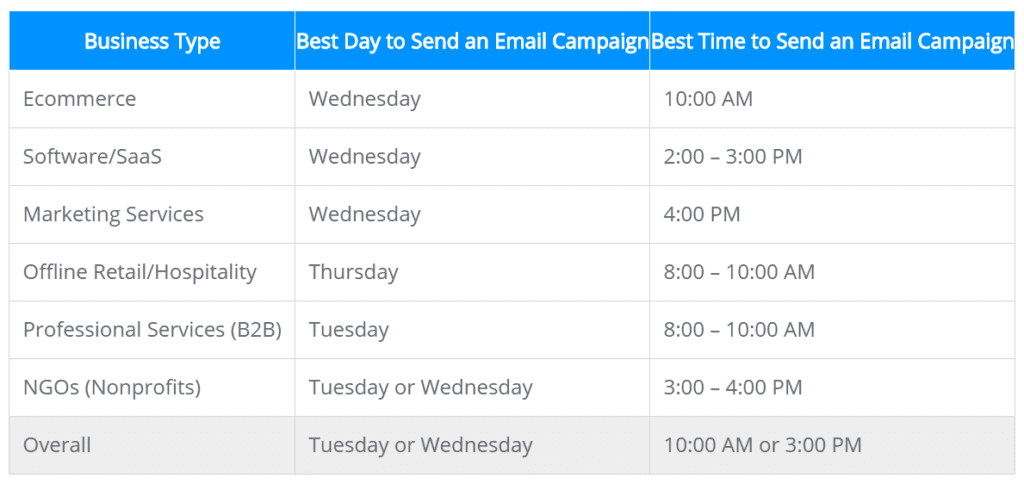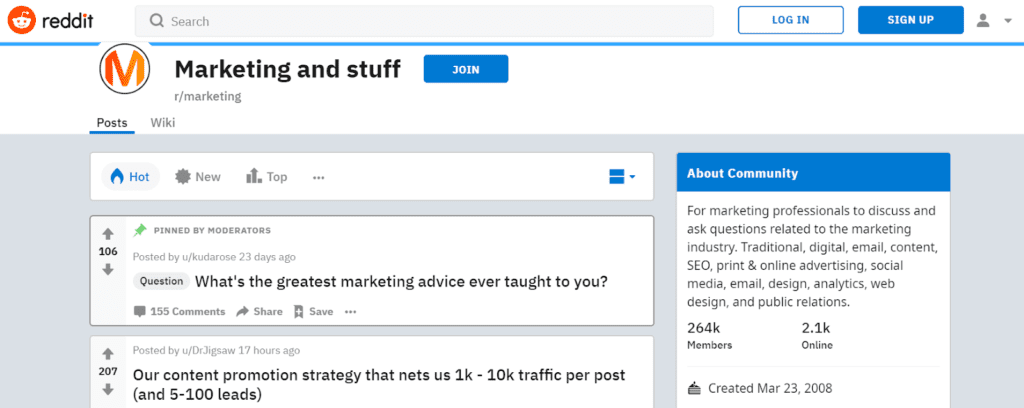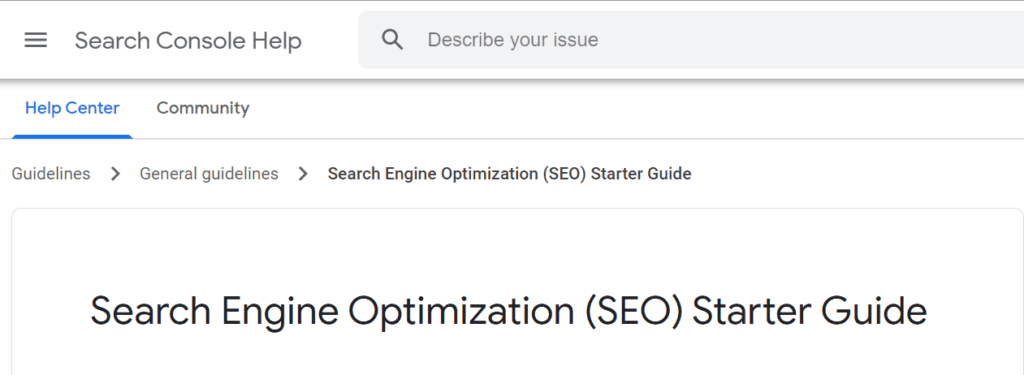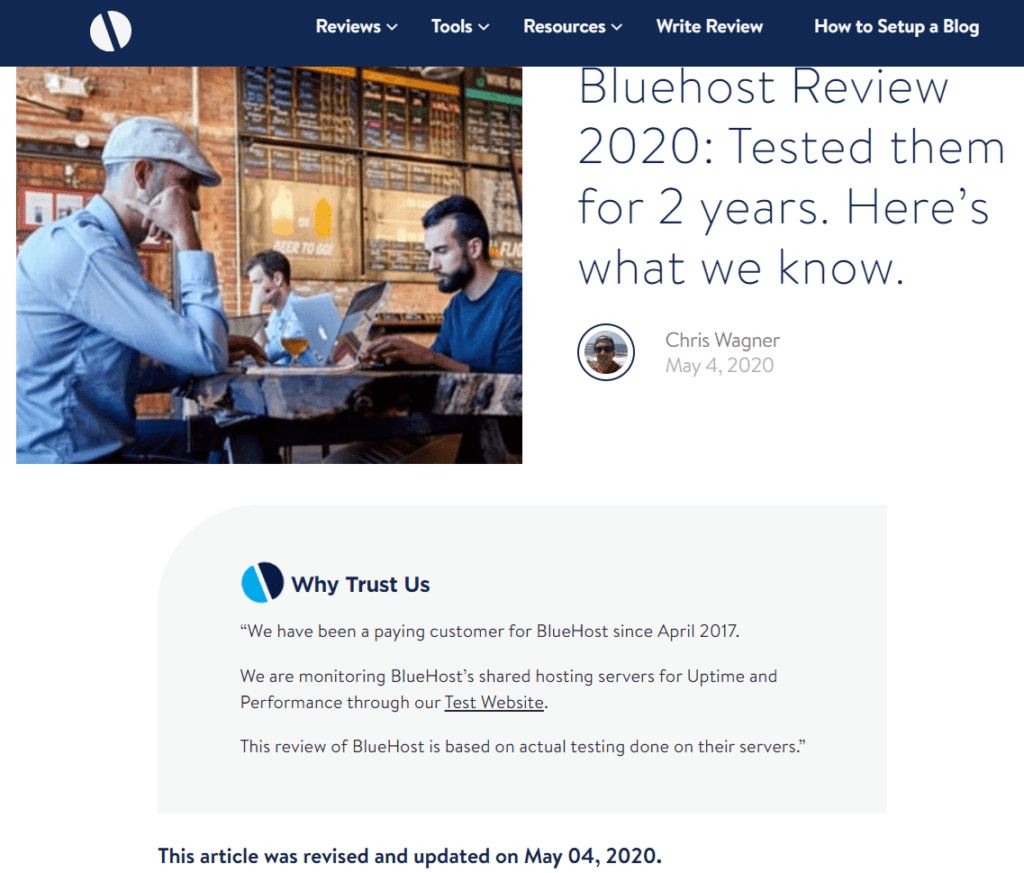

Having trouble promoting your new blog? Blogger Chris Wagner from HostingPill will teach you 7 effective tactics to increase your blog traffic and engagement.
With the time we spend consuming online content increasing, there’s never been a better time to light up the landscape with your blog.
Whether it’s a personal blog or a small business blog, it has to compete for attention with all the countless other things on the internet.
Particularly new blogs, this can seem like a daunting task.
That being said, there are some practices that can give you a great head start.
So let’s get started on your head start. First up:
1. Use optimal posting/send time
I used to tell my friends that “optimal posting time” is the reason my profile pictures got so many likes. They laughed.
Turns out, optimal posting time really is something worth your attention.
The thinking is that there’s a sweet spot during certain parts of the day or week when more people are online, and thus when more people are ready to share and give internet points to your content.
Advice on the best times themselves vary, but the general thought is that weekdays during lunch time and after work are consistently good.
Different times for different platforms
However, you’ll typically find that there’s variation between platforms. Oberlo, for example, identifies Facebook as better for mid-day afternoon posting, when people are checking the site during work.
And Reddit historically has been famous (or infamous) for use by people slacking off in the office, though it’s likely evolved past that by now.
Instagram—think of the enormous volume of food pictures, and that should give you a hint as to the best times of day.
Plus, don’t think optimal timing is limited to social media. It applies to email marketing as well.
Sendinblue did some solid research on the best send times and days for launching email campaigns, broken down by major sectors:


One note of caution: as a general rule, you probably shouldn’t trust any easy number you encounter, at least not too much. You’ll need to experiment to see what works best.
Looking for an email marketing service to promote your blog? Send up to 300 emails a day on Sendinblue’s free plan.
For any newbie bloggers wondering how to drive blog traffic with email marketing and grow a blog email list, check Sendinblue’s guide to email marketing for bloggers.
2. Use forums and discussion groups
There are lots of places online to promote a new blog.
These are all quite different, but in general, it’s worth looking at Quora, relevant subreddits (forums on Reddit), Facebook and LinkedIn groups, and forums in general.


One of the advantages is that it can be less costly than a paid social media campaign.
But the real advantage is that you’ll be reaching an audience of people already seeking knowledge and discussion.
On Quora, for example, the best answers are prized. Giving the best answer will mean your answer to a given question is displayed prominently, and it may even surface in top search engine results.
So if your answer includes a link to your blog, or encourages people to check out your blog for more info on the topic, you can drive traffic in a less traditional way.
Facebook groups and subreddits
Similar things can happen in Facebook groups and subreddits.
Things get trickier here, however, as certain Facebook groups or subreddits can be hostile to outright advertising and promotion.
However, if your blog is directly providing content valuable to an online community, you’re less likely to face backlash and more likely to gain not just traffic, but readers.
You can also offer your content more directly by making posts in groups and subreddits and other forums, where it feels relevant. You can also respond to posts from other people on such topics.
“Copy-pasting from a blog post I wrote earlier, as it seems relevant here…”
But you can’t simply count on people getting the “full” answer by clicking your link—they need to get as much of a good answer or insight in your post/comment as possible, with visiting your blog being the bonus material.
3. Collaborate
In general, it’s good to get familiar with your blogosphere – even if some of these blogs are your competitors.
Collaboration is a good way of getting traffic from blogs that are a bit bigger, or even smaller blogs that have a dedicated readership.
It’s also good to have connections in general: one blog may pass an opportunity to you if they recognize you’re a better fit for it.
Below are a couple of specific collaboration tactics:
Co-marketing
Co-marketing, also known as cross-marketing, is when two marketing teams/writers from different organizations work together on a piece of content.
In this case, you (or someone who contributes to your blog) would work together on a piece of content with a contributor to another blog.
Doing such allows each blog to post a particularly solid piece of content, especially content that’s a bit different from the usual fare. Plus, each blog gets exposed to a new audience.
Guest posts
Blog A features a post from a Blog B. Blog A gets content at little-to-no cost, Blog B has the opportunity to reach a new audience.
Guest posts can also be extended into guest-posting campaigns. If you’re knowledgeable enough about a topic, you can write a series of guest-posts instead of just one.
4. Master SEO best practices
Most people are at least familiar with search engine optimization, or SEO. It’s an essential part of building presence on the web, as most people find content through search results.
But SEO is more than just using keywords. Keywords are important, but they’re only part of the picture.
Here are some basic steps to help your site get ranking in search engine results:
- List the keywords that best match user/search intent for your blog and the keywords your competitors are targeting. This will help you form a keyword strategy.
- Internal Linking: Use internal links, or links from one page on your site to another on your site
- Backlinks: Build backlinks, or links to your site from another site. Search engines consider these votes on your organic popularity.
- Site security: Make sure your site has basic SSL and encryption. This helps you rank in search engines and also makes your site more trustworthy to your visitors’ browsers.
- Site responsiveness: make sure your site is fast and mobile-responsive
- Optimize the meta title and meta description of each web page. This is the snippet of information a user sees on the search engine results page enticing them to click.
- Images: properly name image files, and use descriptive alt text and captions. These are recommended by Google itself and help the search engine catalogue your images.
- Avoid duplicate content. Meaning duplicate posts, duplicate titles, duplicate metadata, etc.
If you want to do further reading, you can also check out Google’s general SEO guidelines or SEO Starter Guide:


The important thing to remember, though, is that a large part of SEO comes down to things you’re already trying to do: getting people to link to your blog, maintaining a healthy and responsive site, etc.
5. Promote your blog through images
Images are essential for holding your audience’s attention and keeping them interested.
Let’s look at three ways to make your images as best as can be for blog promotion.
Create your own original images
Doing this adds personality to your website, and keeps your blog memorable.
Make sure the color scheme of your original images complements or is consistent with your general blog color scheme and branding.
Another tactic is to overlay text on your images. This can be done over fully original images, images you purchase the rights to, or even free stock photos.
Doing this can add your blog’s character, just from font and color, to even the most generic image (though you should still go beyond generic).
For example:


Text-image combos are great at drawing people in. Everyone who’s been on YouTube knows that, because just about every video thumbnail has one.
Overlaying text can be useful for heading your posts or optimizing for social (see below), or just to add more character to your content.
Use infographics
If you know your audience very well, create infographics with content that speaks to their interests.
You can borrow infographics from others with permission, but unsurprisingly, the better option is to create your own—for the same reasons I identified in the previous subsection.
There are lots of free tools like Canva available for creating infographics.
Optimize images for sharing
Optimizing such images for social media sharing is not difficult: essentially, you just need to keep your files small (so they load easily and look okay in thumbnails and crops) and name them.
Using images that seem to contain something useful, like statistics or infographics, are great for many fields—more emotive images like faces can also be better.
Another way to optimize your images for sharing is to make it easier for visitors to share your image while already on your blog.
This can be done by placing sharing buttons on your image:
If a visitor moves their cursor over an image on your blog, the social media sharing buttons will appear, but otherwise be un-intrusive.
Typically, you can do this by adding certain plugins or apps to the platform your site runs on.
6. Always show your best content
Some of your posts are probably better than others at attracting readers.
Focus your energy on getting maximum value out of these posts. Here are some ways you can share them:
Lists and resource libraries
To an extent, your blog is already a resource library.
But you can make it even more useful to readers and new visitors by streamlining and organizing your site structure.
You can have a single page that’s just a categorized list of your most useful posts, with a short description of each link.
You can also make miniature versions of this: for example, a widget on the sidebar or menu of your blog, which has a short list of posts.
This lets you alert your visitors immediately of content they may be interested in.
Link to your best content in other posts
Internal linking is already a recommended SEO practice, as it helps you rank in search results and keeps visitors traveling within your website.
Include links to your most important posts in your newly published posts, where it’s contextually relevant to do so.
Update and repost your best content
This goes back to the point I made earlier about keeping your best work useful.
Your older content should stand the test of time if it’s properly updated. Then all you need to do is repost the content, or even pin it to the top of your home page or blog archives.
Though just one note here: it’s usually best to note that a given post was updated and when.
Here’s an example from my site, at the bottom of the image:


Pin your best posts on social media profiles
Some social media sites, like Twitter, let you pin certain posts to the top of your profile. If anyone visits your profile on that network, that post is one of the first things they’ll see.
A lot of people post links to their latest blog posts and then pin those posts. There’s nothing wrong with that, and it’s a good way of driving traffic to your newer content.
But, it’s also a good opportunity to pin links to the content you’re proudest of, or which you think can attract the most visitors.
People on social media have a generally limited attention span, and it makes sense to make the most of it by pinning something you know will catch a user’s eye.
7. Reach out to influencers and experts
Many new blogs have a similar struggle: despite having good content, getting noticed and building an audience is an uphill battle.
One of the advantages of reaching out to influencers and experts is that they may give your blog a shout-out or recommend you to their audience.
Now, you shouldn’t just wait for someone with a reputation in your field to notice you.
A great way of attracting their attention and incentivizing them to help you out, is to mention them or cite them in your posts.
And once you’ve done so, you can build on that by letting them know on social media. This way, they’re more likely to take a look at your content and share it.
Start promoting your blog today
There’s no guarantee that every single tactic mentioned will work for promoting your blog. But, they’re certainly worth trying out!
The big things to remember: post strategically, try out forums, collaborate with others, use SEO best practices, optimize your images, get maximum value out of your best content, and reach out to experts.
And once you figure out which of these are most relevant to your blog, you can zero-in on them and take them to new levels.
So what are you waiting for?
Happy blogging!
 Deutsch
Deutsch




















